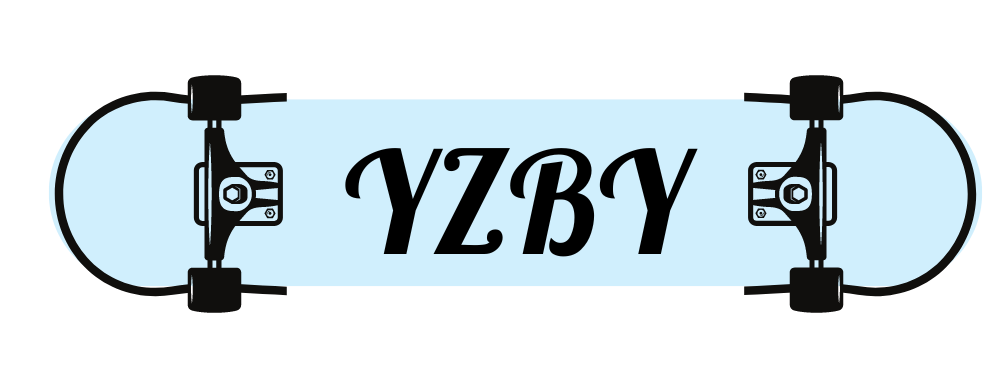Skateboard related
Skateboarding Beginner’s Guide: 10 Common Questions and Answers
Skateboarding is an exciting, dynamic, and creative sport, but for beginners, there are often many uncertainties and questions. From choosing the right skateboard to learning how to ride safely, beginners may have many doubts. In this article, we’ve compiled answers to 10 common skateboarding questions to help you get started smoothly and enjoy the fun that skateboarding brings.
1. What’s the difference between a skateboard and a longboard?
Skateboards and longboards may look similar, but they are designed for different purposes:
- Skateboards are typically shorter, designed for tricks and street skating. They are more maneuverable and are best for doing tricks like ollies and grinds.
- Longboards are longer, wider, and designed for stability and smooth cruising, making them ideal for downhill riding and long-distance travel. They are perfect for beginners or those who prefer a more relaxed ride.
2. How do I choose the right skateboard for me?
When choosing a skateboard, consider the following factors:
- Riding style: If you want to do street tricks, a street skateboard is the way to go. If you’re looking for a more stable ride or long-distance cruising, a longboard might be a better option.
- Deck width: Wider decks provide more stability, while narrower decks are more agile and perfect for tricks.
- Wheel hardness and diameter: Softer wheels are better for rough terrain, while harder wheels are suited for smooth surfaces. Larger wheels are great for downhill riding, while smaller wheels are ideal for street tricks.
3. Should I go “Regular” or “Goofy” with my stance?
Skateboarding stances are categorized as Regular (left foot forward) and Goofy (right foot forward). Here’s how to figure out which stance is best for you:
- Regular: To determine your stance, try standing on a skateboard and pushing yourself forward. The foot that naturally leads the push is typically the one you should place at the front.
- Goofy: If your right foot feels more comfortable at the front while pushing, you may be Goofy.
Choosing the correct stance is key to your comfort and control on the board.
4. What basic skills should I learn first as a beginner?
As a beginner, here are the key skills you should focus on learning first:
- Basic riding: Learn how to push the board and keep your balance while riding.
- Braking: Practice stopping safely using foot braking or sliding.
- Turning: Learn how to shift your body weight and steer with your front foot to make turns.
- Ollie (Basic Jump): The ollie is a fundamental jumping trick and will help you improve your board control.
5. Is skateboarding really difficult to learn?
It might seem difficult at first, especially maintaining balance and controlling the board, but with patience and consistent practice, most people can master basic skills within a few days or weeks. Start slowly, be patient with yourself, and take the time to build your confidence on the board.
6. What if I fall? Will it hurt?
Falling is a part of learning to skateboard, but with the right protective gear, you can minimize the risk of injury. Here’s what to wear:
- Knee, elbow, and wrist guards: These will protect your joints from injury during falls.
- Skateboarding shoes: Specialized shoes offer better grip and comfort while skating.
- Helmet: A helmet protects your head from potential falls or impacts.
Try to avoid using your hands to break your fall, and learn how to fall safely to reduce the risk of injury.
7. How do I maintain my skateboard?
To keep your skateboard in good condition and ensure it performs well, regular maintenance is essential. Here’s what to check:
- Wheels: Check the wheels regularly for wear and tear. Clean them to keep them rolling smoothly.
- Bearings: Clean and lubricate your bearings to ensure they spin freely and reduce friction.
- Deck: Inspect the deck for cracks or damage. Keep it clean to prolong its life.
8. How can I prevent my skateboard from getting damaged?
To avoid damaging your skateboard, try to minimize strong impacts and rough falls. As a beginner, avoid attempting complex tricks or skating on rough terrain. Always check the board after each session to ensure all components are intact and secure.
9. Where can I skate?
Skateboarding can be done in many different places. The most common spots include:
- Skateparks: Skateparks are specifically designed for skateboarding, with ramps, rails, and other features for performing tricks.
- Streets: You can skate on city streets, but be sure to avoid areas with heavy traffic.
- Open spaces: Parks, parking lots, and wide, flat areas are great for practicing basic skills and tricks.
Always be aware of your surroundings, and make sure you’re skating in a safe, legal space.
10. How can I improve my skateboarding skills?
To get better at skateboarding, the key is consistent practice and pushing your limits. Here’s how to improve:
- Take lessons or seek advice from experienced skateboarders: Learning from professionals can speed up your progress.
- Practice regularly: The more you practice, the faster you’ll improve. Try to skate every day or a few times a week.
- Watch skateboarding videos: Watching skilled skaters perform tricks can inspire you and help you learn new techniques.
Conclusion
Skateboarding is a fun and challenging sport, and learning the basics is just the first step. With patience, practice, and the right equipment, you can improve your skills and enjoy the ride. We hope this article has answered some of your common questions and helped you feel more confident in your skateboarding journey.
Ready to start your skateboarding adventure? Visit our website yzby.shop to find the perfect skateboard for you and get started today!

